Thanks to my son’s interest in sewers, I discovered a hidden treasure in London. The Crossness Pumping Station is known to few Londoners or tourists. This sewage pumping station from the Victorian era is so beautiful that it has earned the nickname Cathedral of Sewage. If you want to learn more about this place and some interesting trivia about London’s history of sewers, keep reading.
Table of Contents
About Crossness Pumping Station in London
The Crossness Pumping Station is a former sewage pumping station. Designed by Metropolitan Board of Works’ chief engineer Sir Joseph Bazalgette and architect Charles Henry Driver, is next to the current pumping station in London. Built in response to the Great Stink, a surreal sewer-related event in the city, the factory pumped wastewater from the Thames.
PLAN YOUR TRIP TO LONDON
Prepare for your London adventure by securing the London All-Inclusive Pass, granting access to 80+ attractions, guided tours, and a Thames adventure with the Hop-On-Hop-Off Big Bus and Uber Boats by Thames Clippers.
Stay connected in the UK with a giffgaff free SIM or an Airalo eSim for data coverage throughout your London journey. And don’t forget to get Heymondo Travel Insurance, which covers any inconveniences during your trip!
Despite its practical purpose, the pumping station features spectacular cast-iron decorations. For this reason, it is known as the Cathedral of Sewage. Unfortunately, the Crossness Pumping Station was nearly lost to decay.
After being decommissioned, it was vandalised and left to rust. Much of the metal was salvaged for other purposes, but luckily, pumps and motors were too bulky to be removed. However, a group of volunteers who formed the Crossness Engines Trust in 1987 saved the station from decay.
Although there is still much renovation work, London’s first Victorian pumping station is now open to the public for visits. Visiting the Crossness Pumping Station is an awe-inspiring experience, as you can see from the photos in this article.
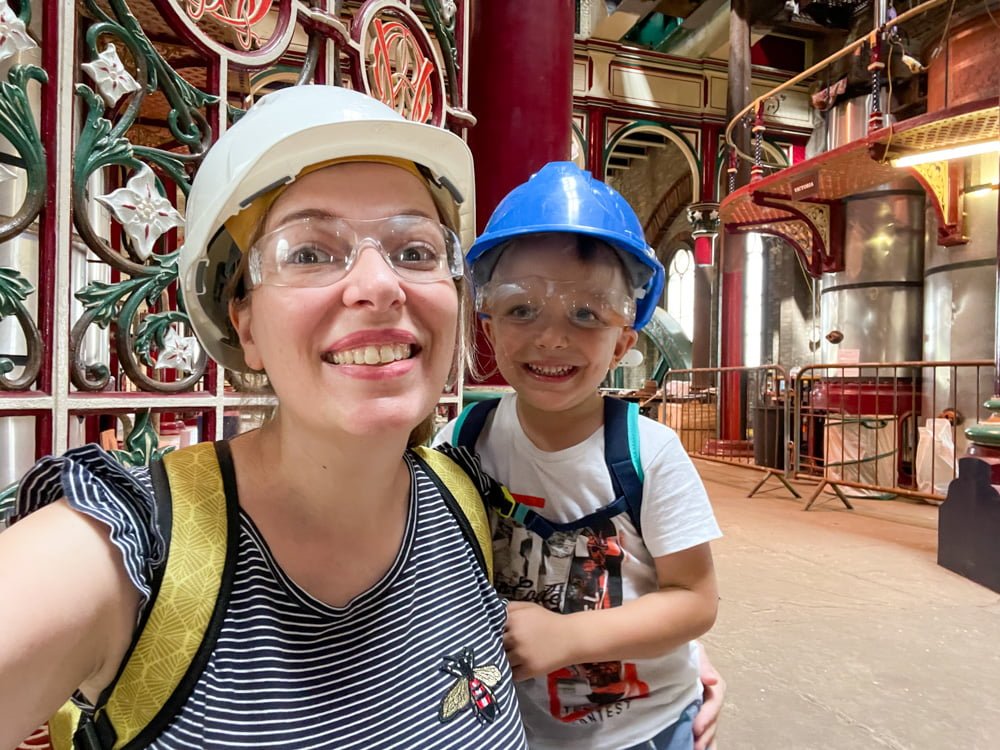
What’s on a the Crossness Pumping Station
The Crossness Pumping Station includes three attached buildings that house the engines and machinery for pumping sewage. From the outside, the building may look like it could be more impressive. Still, once you step inside, you’ll be amazed by the grandeur of the old Victorian steam-powered machinery and the incredible decoration.
The main building is currently undergoing renovations. A section left intact shows visitors what it looked like in its original state. The contrast between the restored decorations and the rusty decay is truly fascinating. A visit to the Crossness Pumping Station will change how you think about London’s sewage system.
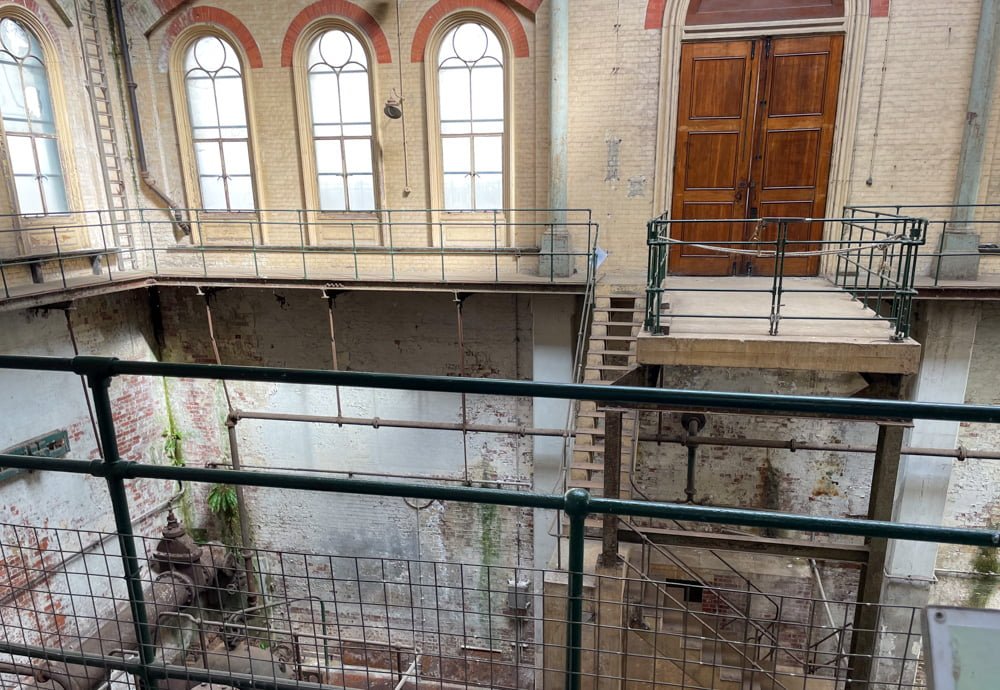
The Great Stink and the birth of the London sewage system
The first part of the Crossness Pumping Station visit focuses on the birth of the London sewage system. In continental Europe, where the first sewers appeared as early as the Middle Ages. In England, instead, people continued to use rivers as a drainage system for much longer.
Everything was disposed of into the rivers, including rubbish and human excrement. This system posed numerous sanitary problems. Mainly drinking the same water in which faeces and waste of all kinds were floating.
Despite numerous proposals and plans to modernise the system, until 1860, London’s sewer was exclusively the Thames. From 1800 onwards, London’s population multiplied from approximately one million to 2.5 million in just fifty years. The ‘sewage system’ became then even more unsustainable.
In 1858, however, the problem exploded embarrassingly, resulting in the Great Stink. During a sweltering summer, the horrible stench of the river worsened. The House of Commons even considered relocating from the Palace of Westminster due to the stench.
The situation was so unbearable that the Great Stink finally gave politicians the impetus to create a proper sewage system. Sir Joseph Bazalgette’s plan included two sewers away from the city centre to drain the sewage to the east and allow clean water to flow into the river. The Crossness Pumping Station was built quickly to leave the Thames’ stench behind.
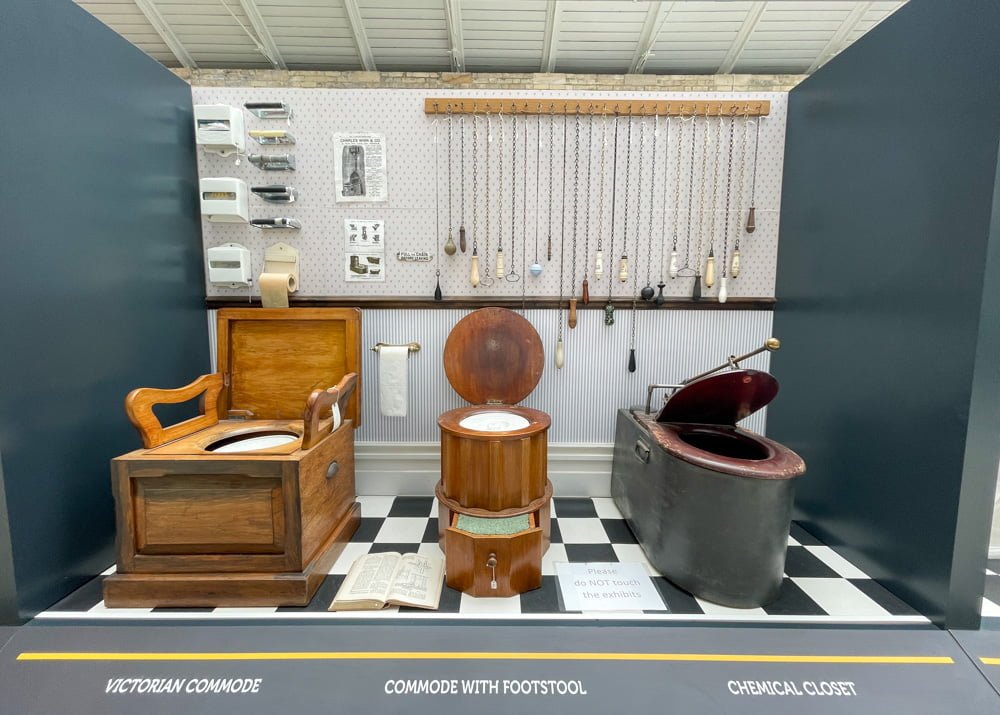
The Toilet Timeline
Now that you have in mind the pleasant smell that the Thames must have had in Victorian times, you can better appreciate the workings of modern toilets. If you’ve ever wondered what toilets looked like before they took their conventional white ceramic form, you can take this curiosity away by wandering around the dedicated exhibition.
You can follow the entire development of the toilet on the dedicated online exhibition site, The Toilet Timeline. My favourites are undoubtedly the decorated ceramic pots, fortunately already fitted with a siphon.
Toilets, just like sewers, have developed considerably in design and technology over the years. The subject might elicit a few embarrassed giggles. Still, this exhibition tells a fascinating story of human ingenuity and innovation.
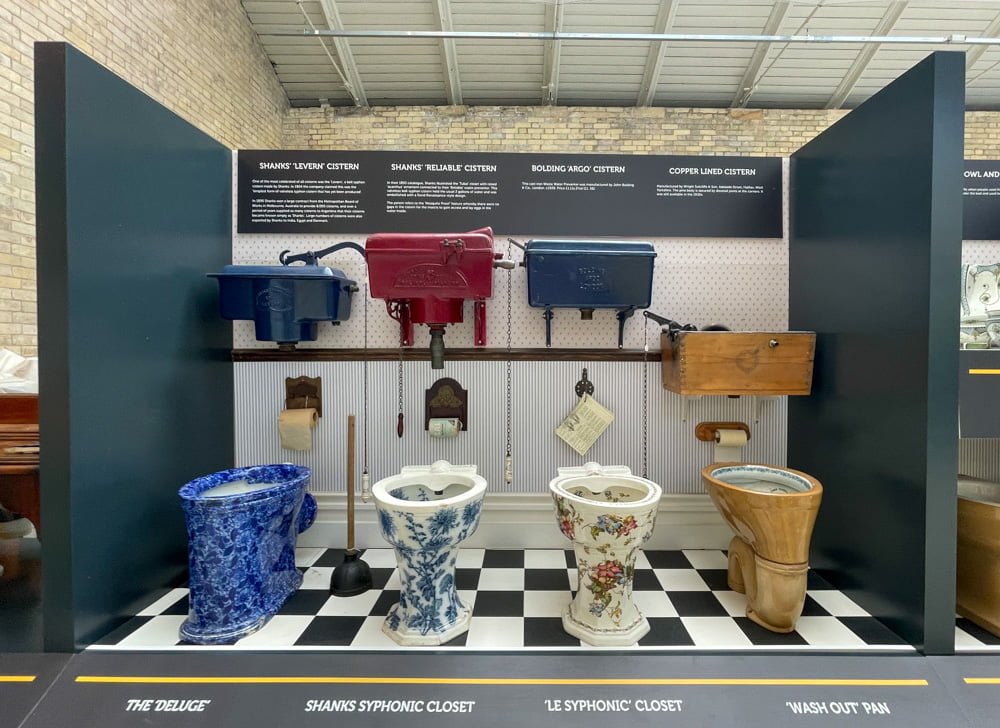
The Cathedral of Sewage
The most fascinating area of the whole Crossness Pumping Station complex is the one nicknamed the Cathedral. The reason becomes evident when you put on your goggles and helmet to enter it. Sculptures of fruit and vegetables against constipation climb the metal beams of the structure. These decorations transform the sewage pumping station into a mystical place.
Image the smell of the sewage and a working environment full of colours, leaves, and fruit. Restored in its original colours, the Cathedral of the Sewers presents an unconventional and fascinating image of sewage systems.
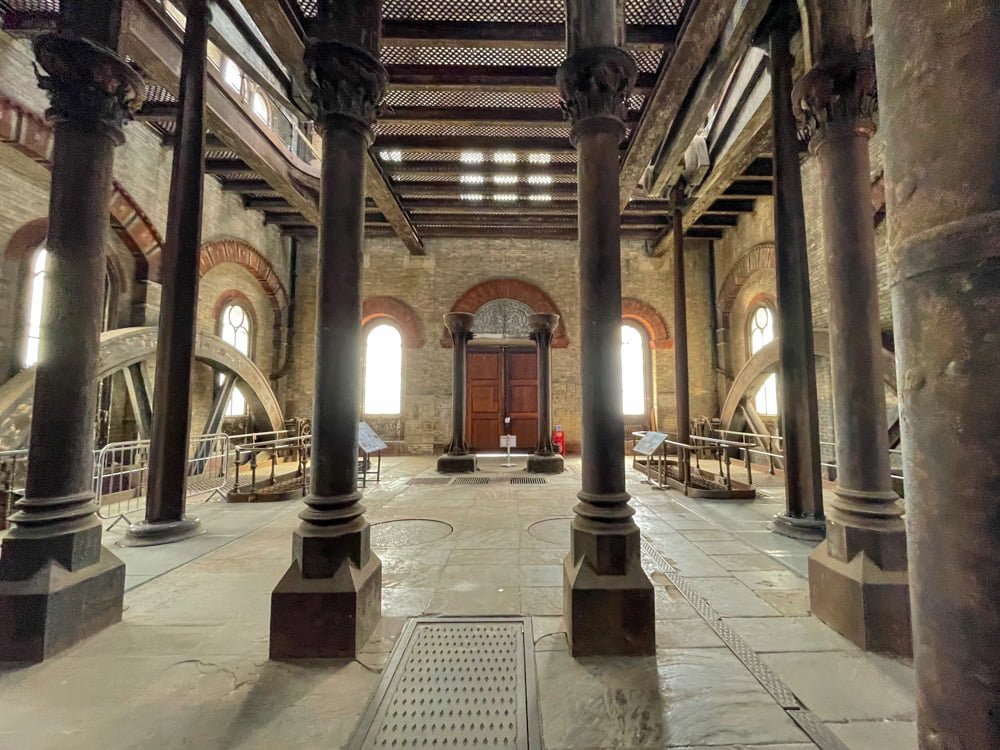
Around the Crossness Pumping Station
The Crossness Pumping Station, now seen as an isolated and lonely building, was a bustling place during its operational days. Despite being located on a remote site far from the city, the pumping station was constantly abuzz with people working tirelessly to keep the entire system running.
The workers’ houses
Since the sewage pumping system had to be in operation every day, 24/7, the workers lived in a small community around Crossness Pumping Station. The smell of the sewage was certainly disgusting, yet life at the pumping station for the working class was not so bad.
The workers’ jobs were skilled and well-paid, while the building at the end of the gardens was the school for the workers’ children. Crossness was not quite a model working-class village, as seen in Europe, but certainly, a real community linked to the rhythms of the sewage pumping station.
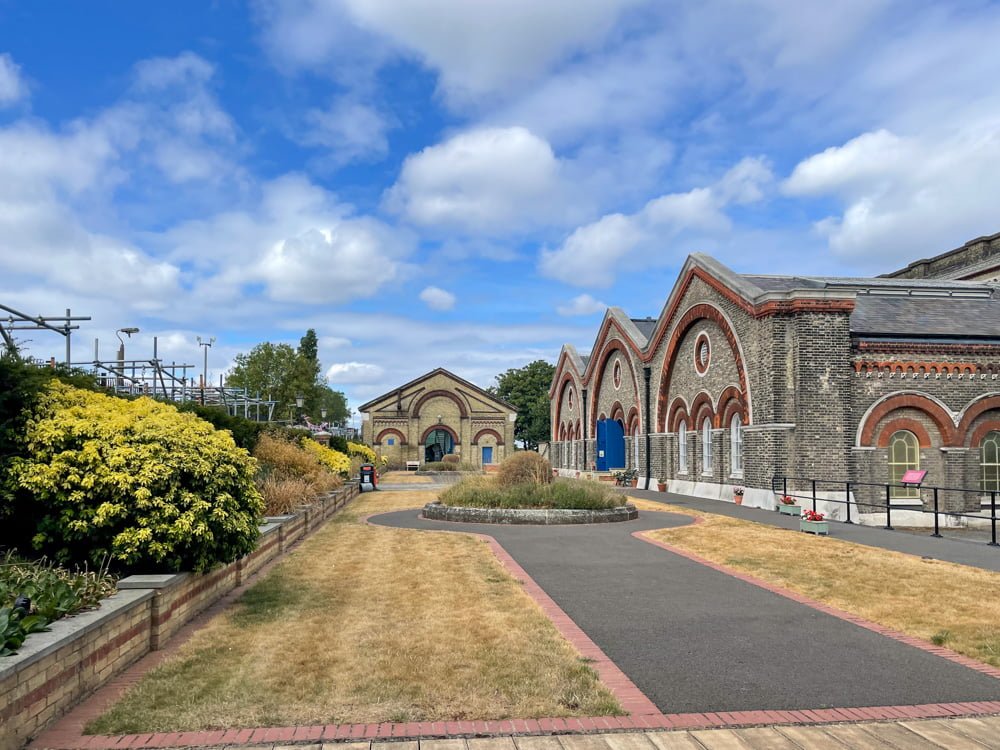
Rang Railway
Another aspect related to the Crossness Pumping Station’s operation was the coal supply, as all the pumps ran on steam. The coal arrived at Crossness by the river and was transported to the pumping station by an internal railway line.
Today, unfortunately, very little is left of the Rang Railway, the narrow-gauge railway line to the pumping station. Volunteers are working hard to restore the train and tracks to put them back into operation. My son and I visited the garage where they were doing the repairs, and we can’t wait to return to admire the old locomotive in operation again.
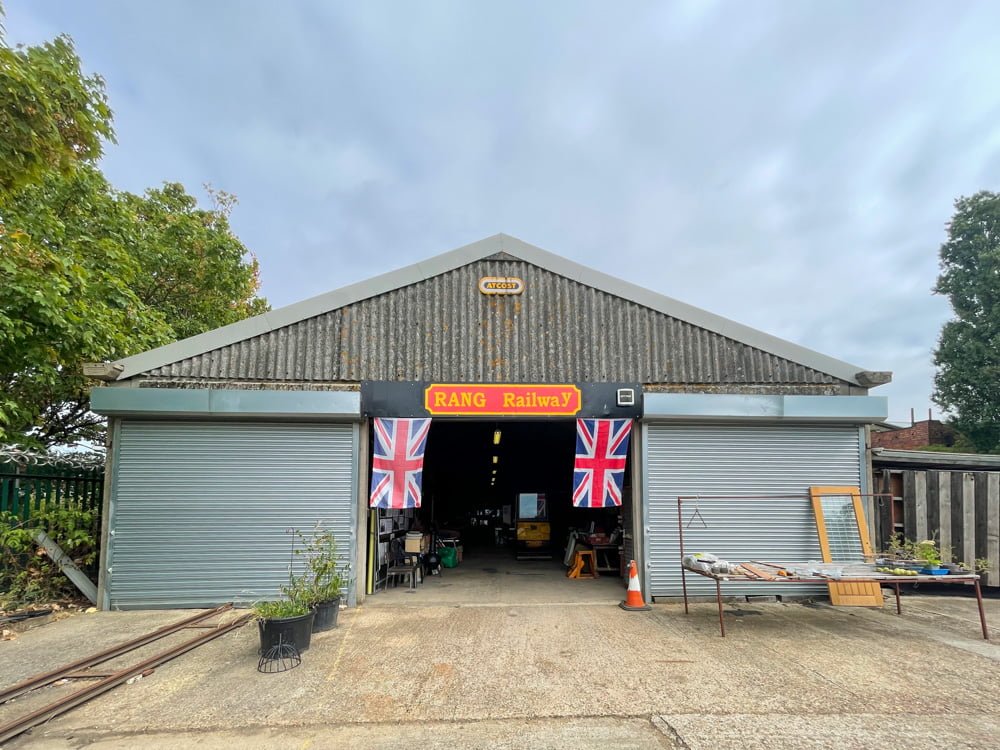
The historical importance of the Crossness Pumping Station
Before the Crossness Pumping Station in London, there were no modern sewers or sewage pumping systems in the United Kingdom, except for the recently opened Liverpool plant. Luckily, Sir Joseph Bazalgette, the Metropolitan Board of Works chief engineer, had already devised a plan. The idea was to bring the wastewater back to the surface, filter it, and release it into the river outside the city.
In 1865, Prince of Wales Edward, who later became King Edward VII, the Archbishops of Canterbury and York, and the Mayor of London attended the Crossness Pumping Station opening ceremony. After Sir Joseph Bazalgette’s inauguration speech, the Prince turned a wheel, and the four engines of Crossness, each named after a member of the royal family, sprung into action.
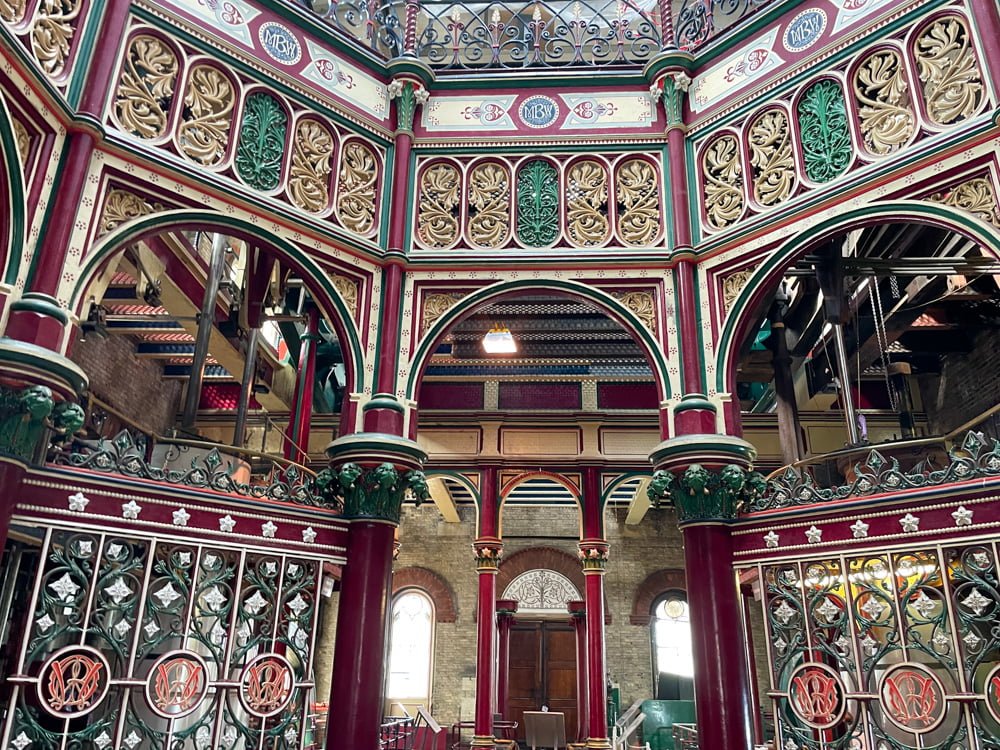
The sewage network
The plan involved an underground network of pipes running beneath the city, transporting waste into two large sewers on either side of the Thames that would carry the waste away from London. The waste was moved through the sewer system by gravity.
Sewer pipes were installed underground at a deep level to allow natural discharge of the waste. At the same time, the pumping stations of Crossness in the south and Abbey Mills in the north would have pumped the wastewater.
How water is filtered (still today)
Initially, the filters used in the sewage were elementary. The London sewage system was updated to filter solid waste in 1888. Although it was still not environmentally friendly, the solid waste was transported to sea on barges instead of being discharged back into the Thames.
If drinking sewage water that has only been filtered quickly and then dumped back into the river disgusts you, then you should know that this is still a common practice in many places. However, in modern water supply networks, the water is purified and made drinkable with more advanced filters. For further information, refer to my article about the London Museum of Water & Steam.
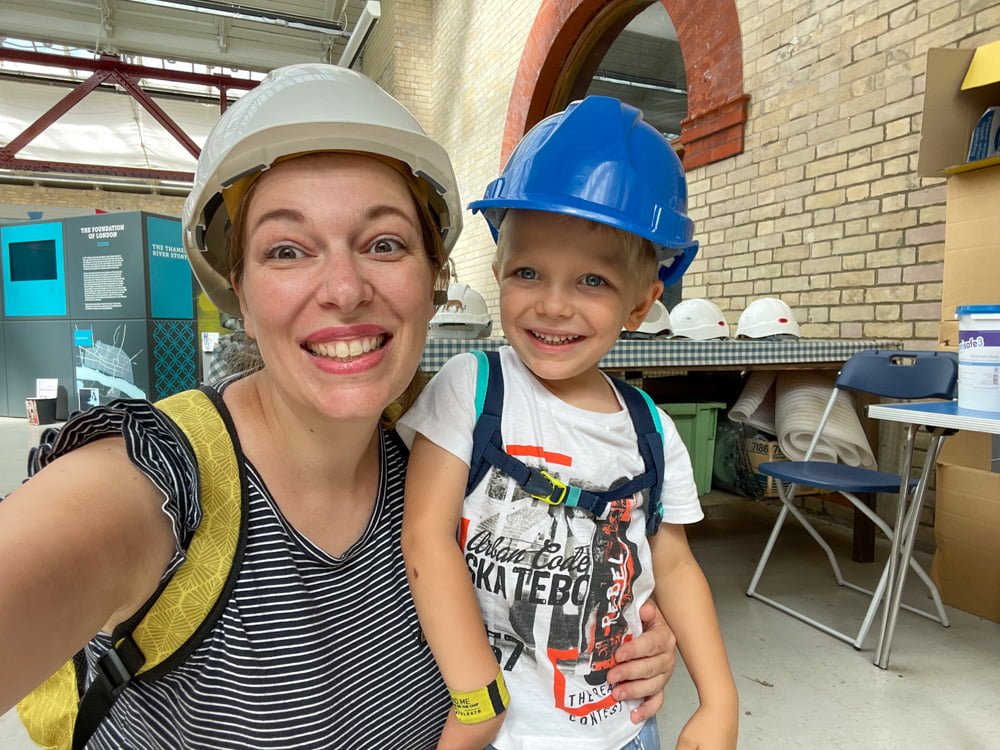
Practical information for visiting Crossness Pumping Station
To visit Crossness Pumping Station, you can only attend open days, guided tour events, or photography events. As the station is located quite far from the main tourist attractions in London, it is recommended that you always check the website for opening days and times before planning a visit to Crossness.
How to get to Crossness Pumping Station from central London
Because of its location, Crossness Pumping Station is not easy to get to and is not well served by public transport. My son and I arrived by bus, but from the nearest bus stop, you have to walk about half an hour further down a lonely street or through a park. Both are not particularly clean and pleasant.
It is undoubtedly much better to reach Crossness Pumping Station by car, Uber, or taxi. There is a car park for visitors to Crossness just before the main gate to Thames Water, London’s current sewage pumping system.
To get to Crossness without taking a wrong turn, you need to set on Google Maps or your satnav the postcode SE2 9AQ leading to Bazalgette Way or the alternative postcode SE2 9XL (197). From the car park, you must walk down a footpath of approximately 700 metres.
Crossness Pumping Station
Bazalgette Way, Abbey Wood
London SE2 9AQ
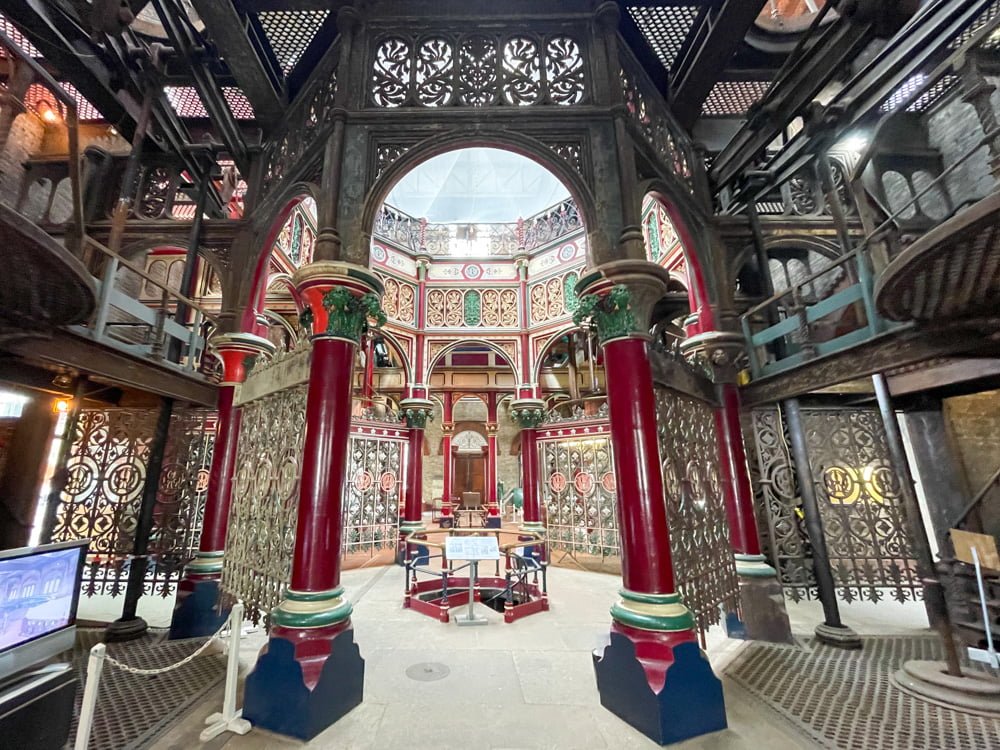
Where to stay in London
London has a wide range of accommodation, from hostels to luxurious hotels, but it can be expensive. For a luxurious stay, I highly recommend the 5-star hotel Broadwick Soho, close to Piccadilly Circus, with refined and beautifully designed rooms, a terrace and a restaurant. A great choice is also the Hampton by Hilton London Waterloo, just a 5-minute walk from Waterloo train station and conveniently located near many popular attractions. Another option, if you are looking for a nice hotel with a limited budget, is the Assembly Covent Garden, a design hotel with well-decorated rooms and sculptures, ideal for those on a budget.
Despite the difficulty in reaching Crossness Pumping Station, visiting London’s first pumping station is an incredible experience. The beauty of the Cathedral of Sewage is such that it leaves you speechless and is worth the trip. Leave a comment about this sewer museum and if you plan to add it to your next visit to London.
